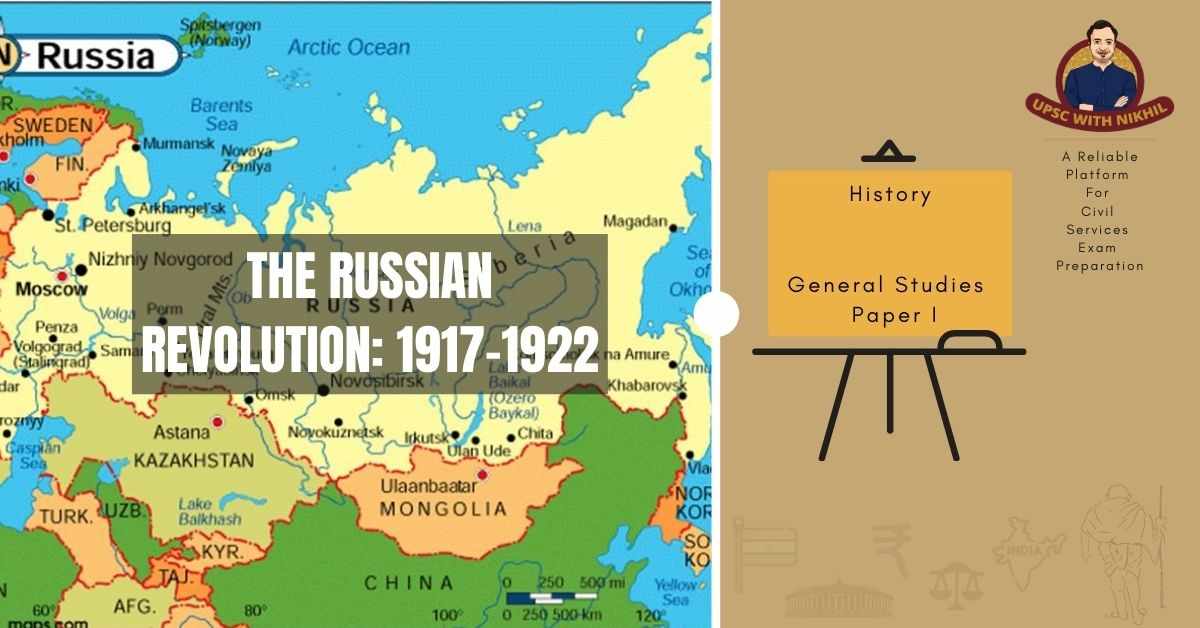The Russian Revolution: 1917-1922
One of the most important events of the twentieth century that ended centuries of monarchy in Russia and created the world's first constitutionally communist state was the Russian Revolution of 1917.
BACKGROUND OF THE REVOLUTION
With a large population of peasants and a growing number of industrial workers, Russia was one of the most economically backward and least industrialized nations in Europe in the 1900s.
It was where feudalism's last vestiges, serfdom, were still in practice. Serfdom was a system in which landless peasants were forced to serve the nobility that owned the land. While the practice ended in most of Europe by the time of the Renaissance in the late 16th century, it was still carried out well into the 19th century in Russia.

Serfdom would not be abolished until 1861. A chain of events that would lead to the Russian Revolution in the coming years would be set off by the emancipation of servants.
Much later than Western Europe and the United States, Russia was industrialised. It brought with it immense social and political changes when it finally did, around the turn of the 20th century.
The population of major Russian cities such as St. Petersburg and Moscow almost doubled between 1890 and 1910, resulting in overcrowding and destitute living conditions for a new class of Russian industrial workers.
At the end of the 19th century, a population boom, a harsh growing season due to the northern climate of Russia, and a series of costly wars, starting with the Crimean War (1854-1856), led to frequent shortages of food across the vast empire.
Large protests against the monarchy by Russian workers led to the 1905 Bloody Sunday massacre. The czar's troops killed or wounded hundreds of unarmed protestors.
The massacre sparked the 1905 Russian revolution, during which angry workers responded throughout the country with a series of crippling strikes.
NICHOLAS II
Czar Nicholas II promised, after the bloodshed of 1905, the formation of a series of representative assemblies, or Dumas, to work towards reform.
In August 1914, to support the Serbs and their French and British allies, Russia entered World War I. Their participation in the war will soon prove devastating for the Russian Empire.
Imperial Russia’s militarily was no match for industrialized Germany, and Russian casualties in any previous war were greater than those sustained by any nation. As inflation mounted, food and fuel shortages plagued Russia. With the costly war effort, the economy was hopelessly disrupted.
In 1915, Czar Nicholas left Petrograd (St. Petersburg), the Russian capital, to take command of the Russian Army front. "(In 1914, because the name "St. Petersburg" sounded too German, the Russians renamed the imperial city.)
FEBRUARY REVOLUTION
On March 8, 1917, the February Revolution protesters clamoring for bread have taken to the streets of Petrograd. The protesters clashed with police but refused to leave the streets, supported by huge crowds of striking industrial workers.
On March 11, the Petrograd military garrison troops were called out to quench the uprising. The regiments opened fire in some encounters, killing demonstrators, but the protesters kept to the streets and the soldiers began to waver.
On March 12th, the Duma formed a provisional government. A few days later, the throne was abdicated by Czar Nicholas, ending centuries of Russian rule under Romanov.
A liberal program of rights such as freedom of speech, equality before the law, and the right of trade unions to organize and strike was set up by the leaders of the provisional government, including the young Russian lawyer Alexander Kerensky. They were against a violent social revolution.
Kerensky continued the Russian war effort as Minister of War, even though Russian involvement was enormously unpopular in World War I. This further exacerbated Russia's problems with the food supply. As peasants looted farms and food riots erupted in the cities, unrest continued to grow.
Leftist revolutionaries led by Bolshevik Party leader Vladimir Lenin launched a nearly bloodless coup d'état against the provisional government of the Duma on November 6 and 7, 1917 (or October 24 and 25 on the Julian calendar, which is why the event is often referred to as the October Revolution).
A group of leaders from the bourgeois capitalist class of Russia had assembled the provisional government. Instead, Lenin called for a Soviet government which would be ruled directly by soldiers, peasants and workers' councils.
Occupying government buildings and other strategic locations in Petrograd, the Bolsheviks and their allies soon formed a new government with Lenin as its head. Lenin became the dictator of the first communist state in the world.
THE RUSSIAN REVOLUTION'S IMPACT
As an influential political belief system around the world, the Russian Revolution paved the way for the rise of communism. As a world power that would go head-to-head with the United States during the Cold War, it set the stage for the rise of the Soviet Union.


